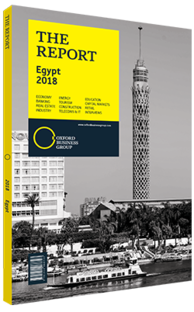Egypt's banks seek to keep liquidity healthy amid reform agenda
The liquidity scenario in Egypt has shifted significantly in recent years. In terms of local currency liquidity, levels have remained buoyant despite a challenging economic environment. Elsewhere in the MENA region, governments have had to resort to drawing heavily on banking sector deposits to address the fiscal shortfalls caused by low global oil prices. As a net energy importer, Egypt has not followed this trend and government deposits have remained relatively solid. As of October 2017 government deposits totalled LE520.9bn ($34.3bn), accounting for 16.2% of the total, according to the Central Bank of Egypt (CBE). This has remained steady in recent years, with state deposits accounting for 17.1% of total deposits at the end of the financial year in 2016 and 14.5% at the same time in 2015.
The real strength of Egypt’s funding base, however, lies in the steady flow of retail deposits that domestic banks have come to rely on. This sturdy base mainly stems from sizeable remittance inflows and a tendency for Egyptian households to deposit rather than borrow. As of May 2017 the household sector accounted for approximately 80% of non-government, local currency deposits, compared to the private sector’s 16.3%, according to the CBE. The reliability of Egypt’s retail deposit base is a key facilitator of sustained sector growth, a fact acknowledged by ratings agency Moody’s when it reaffirmed the industry’s stable outlook in October 2017: “The banks are funded by stable and low-cost domestic deposits, mainly from households, a credit strength. We expect increasing banking penetration and increased remittances to spur deposit growth,” Melina Skouridou, assistant vice-president and analyst at Moody’s, said in an accompanying statement.
New Flows
A vastly different dynamic has determined the country’s foreign currency liquidity. The economic turbulence that followed the 2011 revolution squeezed dollar inflows into Egypt, and by 2013 the CBE was running regular auctions where it sold dollars from its reserves to local lenders. Backlogs in foreign currency requests from customers resulted in the rise of a parallel currency market, with increasing numbers of unreported and unregulated transactions taking place. A currency battle ensued, with the government establishing transfer limits and shutting down exchanges that deviated from the official dollar rate. The dollar liquidity crunch presented numerous problems, as it undermined Egypt’s attractiveness as an investment destination and limited the ability of domestic businesses to pay for imports and expand their activities. This situation drove the CBE’s November 2016 decision to abandon its policy of managing the currency and instead allow it to float freely. As a result, 2017 saw vast improvements in foreign currency liquidity. In July 2017 Tarek Amer, governor of the CBE, told local press that the domestic banking system had received $57bn of cash inflows since the flotation.
Looking Ahead
As the foreign currency liquidity problem has receded, industry discussion has shifted to the issue of excess domestic currency liquidity. The flotation of the Egyptian pound was accompanied by a hike of the benchmark interest rates, as part of CBE measures to safeguard the economy against an overly precipitous devaluation of the currency. In May 2017, as inflation headed towards 30%, the CBE’s Monetary Policy Committee raised the rate by a further 200 basis points in an effort to curtail “demand-side pressures”. One month later another unexpected rate rise brought the overnight deposit rate to a record high of 18.75%, a full 700 basis points higher than the pre-flotation level. This has led to a build up of local currency liquidity, driven by depositors attracted to the more generous margins on offer. While this situation would usually be a boon for the industry, limited lending opportunities in the domestic market means that banks may face difficulties in absorbing this liquidity and covering its cost. The solution to this problem lies in the continued implementation of the government’s structural reform plans and the anticipated improvement in Egypt’s economy.
You have reached the limit of premium articles you can view for free.
Choose from the options below to purchase print or digital editions of our Reports. You can also purchase a website subscription giving you unlimited access to all of our Reports online for 12 months.
If you have already purchased this Report or have a website subscription, please login to continue.

